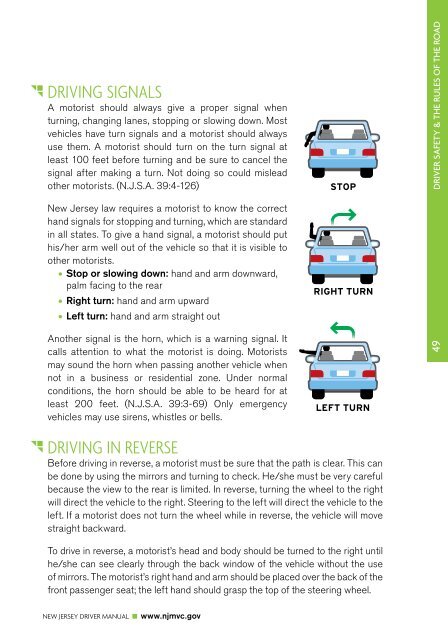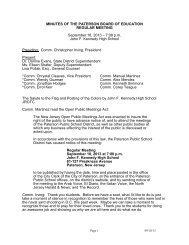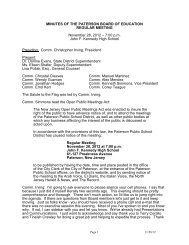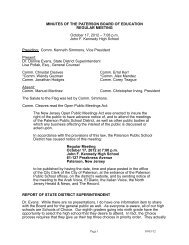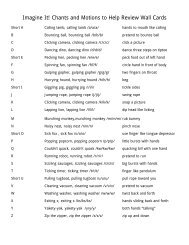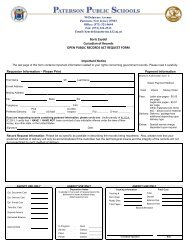Create successful ePaper yourself
Turn your PDF publications into a flip-book with our unique Google optimized e-Paper software.
Driving Signals<br />
A motorist should always give a proper signal when<br />
turning, changing lanes, stopping or slowing down. Most<br />
vehicles have turn signals and a motorist should always<br />
use them. A motorist should turn on the turn signal at<br />
least 100 feet before turning and be sure to cancel the<br />
signal after making a turn. Not doing so could mislead<br />
other motorists. (N.J.S.A. 39:4-126)<br />
Driver Signals<br />
STOP<br />
Driver Safety & the Rules of the Road<br />
<strong>New</strong> <strong>Jersey</strong> law requires a motorist to know the correct<br />
hand signals for stopping and turning, which are standard<br />
in all states. To give a hand signal, a motorist should put<br />
his/her arm well out of the vehicle so that it is visible to<br />
other motorists.<br />
• Stop or slowing down: hand and arm downward,<br />
palm facing to the rear<br />
• Right turn: hand and arm upward<br />
• Left turn: hand and arm straight out<br />
RIGHT TURN<br />
Another signal is the horn, which is a warning signal. It<br />
calls attention to what the motorist is doing. Motorists<br />
may sound the horn when passing another vehicle when<br />
not in a business or residential zone. Under normal<br />
conditions, the horn should be able to be heard for at<br />
least 200 feet. (N.J.S.A. 39:3-69) Only emergency<br />
vehicles may use sirens, whistles or bells.<br />
LEFT TURN<br />
49<br />
Driving in Reverse<br />
Before driving in reverse, a motorist must be sure that the path is clear. This can<br />
be done by using the mirrors and turning to check. He/she must be very careful<br />
because the view to the rear is limited. In reverse, turning the wheel to the right<br />
will direct the vehicle to the right. Steering to the left will direct the vehicle to the<br />
left. If a motorist does not turn the wheel while in reverse, the vehicle will move<br />
straight backward.<br />
To drive in reverse, a motorist’s head and body should be turned to the right until<br />
he/she can see clearly through the back window of the vehicle without the use<br />
of mirrors. <strong>The</strong> motorist’s right hand and arm should be placed over the back of the<br />
front passenger seat; the left hand should grasp the top of the steering wheel.<br />
<strong>New</strong> <strong>Jersey</strong> Driver Manual<br />
www.njmvc.gov


